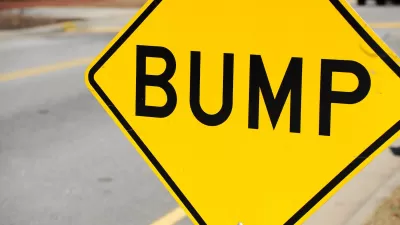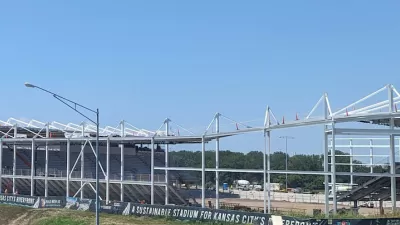Sharon Gochenour explores the ways in which the evolution of graphic communications – from building signage to official logos – represent various aspects of Kansas City's identity.
Although shaped by the subjective tastes and motivations of graphic designers and their clients, past and present, graphic communication can be seen to cumulatively representing the ethos of a common time or place. In cities everywhere, extant public advertisements and graphic representations that arose organically out of historic socio-economic conditions often convey what can be considered a city's "authentic" character. And, using Kansas City as a case study, Gochenour argues that these "authentic" and unique historic images exert a strong power on the city's contemporary identity and its graphic communications, as "[h]istoric advertisements become the layered background of the present, and the character of the past becomes the publicity of the present.
"In the case of Kansas City, the modern city and its image were largely produced by an industrial boom in manufacturing, warehousing, rail traffic, and stockyards in the early part of the 20th century." Today, many graphic creators still focus on the city during its formative years and, as Gochenour's accompanying photographic examples demonstrate, their designs are showcased throughout different neighborhoods in Kansas City.
As the City government and other economic organizations look to rebrand the city as a place of intellectual commerce with sleek logos and websites, their top-down efforts create an interesting tension with the "layered reality of the street," observes Gochenour.
FULL STORY: Urban Branding: The Evolution of Kansas City's Graphic Identity

Alabama: Trump Terminates Settlements for Black Communities Harmed By Raw Sewage
Trump deemed the landmark civil rights agreement “illegal DEI and environmental justice policy.”

Planetizen Federal Action Tracker
A weekly monitor of how Trump’s orders and actions are impacting planners and planning in America.

The 120 Year Old Tiny Home Villages That Sheltered San Francisco’s Earthquake Refugees
More than a century ago, San Francisco mobilized to house thousands of residents displaced by the 1906 earthquake. Could their strategy offer a model for the present?

In Both Crashes and Crime, Public Transportation is Far Safer than Driving
Contrary to popular assumptions, public transportation has far lower crash and crime rates than automobile travel. For safer communities, improve and encourage transit travel.

Report: Zoning Reforms Should Complement Nashville’s Ambitious Transit Plan
Without reform, restrictive zoning codes will limit the impact of the city’s planned transit expansion and could exclude some of the residents who depend on transit the most.

Judge Orders Release of Frozen IRA, IIJA Funding
The decision is a victory for environmental groups who charged that freezing funds for critical infrastructure and disaster response programs caused “real and irreparable harm” to communities.
Urban Design for Planners 1: Software Tools
This six-course series explores essential urban design concepts using open source software and equips planners with the tools they need to participate fully in the urban design process.
Planning for Universal Design
Learn the tools for implementing Universal Design in planning regulations.
Clanton & Associates, Inc.
Jessamine County Fiscal Court
Institute for Housing and Urban Development Studies (IHS)
City of Grandview
Harvard GSD Executive Education
Toledo-Lucas County Plan Commissions
Salt Lake City
NYU Wagner Graduate School of Public Service





























